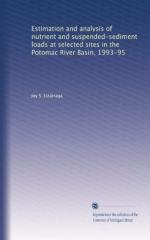|
This section contains 316 words (approx. 2 pages at 300 words per page) |
Centimeter to meter-scale layering, or bedding, is a defining characteristic of sedimentary rocks. Non-horizontal depositional beds are called bedforms, and geologists refer to the lithified remains of bedforms in sedimentary rocks as cross bedding. Patterns of stratification, including cross bedding, allow sedimentary geologists called stratigraphers to deduce the dynamic processes that occurred in ancient sedimentary environments.
Atmospheric and aqueous currents create bedforms. When wind or water carries loose grains across a horizontal bed of unconsolidated sediment, regular geometric patterns develop on the surface of the bed. These structures vary in size from very small ripples, to medium-sized waves and megaripples, to large and very large dunes. The velocity, direction, constancy, and homogeneity of the current, or flow field, determines the size and shape of the resulting bedform field. For example, a one-directional flow field like a river current tends to create asymmetrical bedforms, whereas bidirectional currents like tides or waves deposit symmetrical ripples and dunes.
Bedforms migrate over time. Sometimes the flow field is strong enough, or the bedforms are small enough, that migration occurs by erasure of the entire bedform field, and formation of a new pattern of ripples or dunes. Ripples typically migrate by this type of wholesale reshaping. Ripples preserved in sedimentary rocks suggest that the ripples froze in their final configuration, either because the flow field waned to a point where it could no longer transport sediment, or perhaps that rapid deposition of an overlying bed buried them. Larger bedforms, including aqueous and wind-formed, or Eolian, dunes, migrate by a process in which the water or wind picks up grains from the upstream face of the bedform and deposits them on deposits them on the downstream face. This process creates a composite bedform with inclined internal beds. When dunes are lithified, this internal stratification is preserved as cross bedding.
See Also
|
This section contains 316 words (approx. 2 pages at 300 words per page) |


